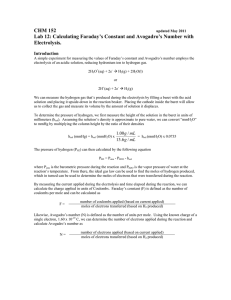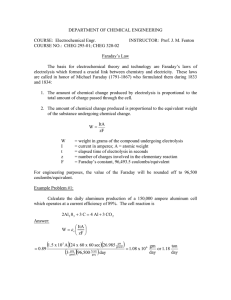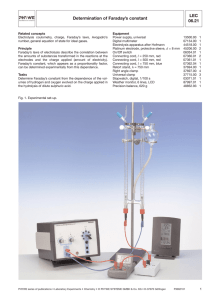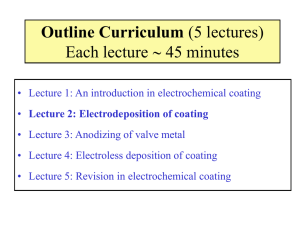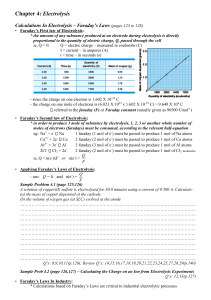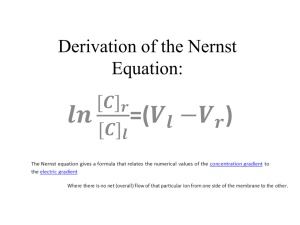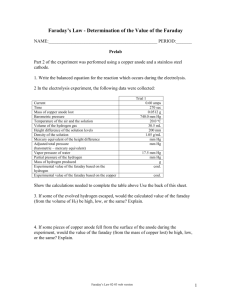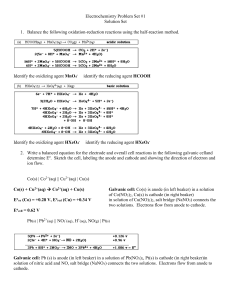Electrolysis, the Faraday, and Avogadro`s Number
advertisement
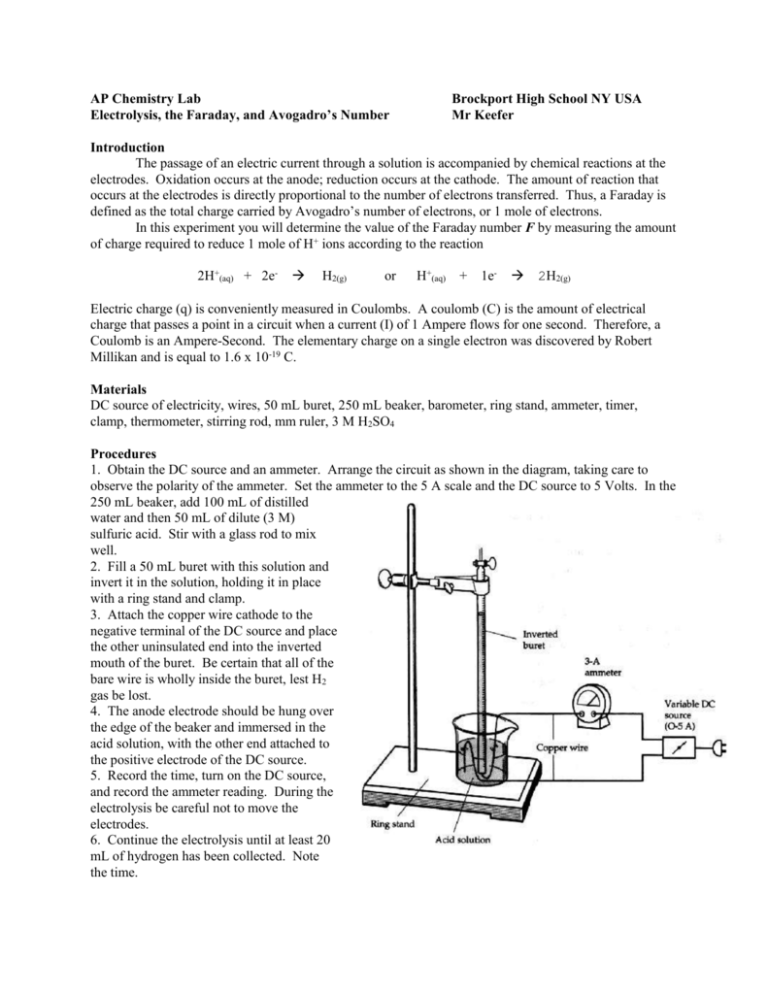
AP Chemistry Lab Electrolysis, the Faraday, and Avogadro’s Number Brockport High School NY USA Mr Keefer Introduction The passage of an electric current through a solution is accompanied by chemical reactions at the electrodes. Oxidation occurs at the anode; reduction occurs at the cathode. The amount of reaction that occurs at the electrodes is directly proportional to the number of electrons transferred. Thus, a Faraday is defined as the total charge carried by Avogadro’s number of electrons, or 1 mole of electrons. In this experiment you will determine the value of the Faraday number F by measuring the amount of charge required to reduce 1 mole of H+ ions according to the reaction 2H+(aq) + 2e- H2(g) or H+(aq) + 1e- 2H2(g) Electric charge (q) is conveniently measured in Coulombs. A coulomb (C) is the amount of electrical charge that passes a point in a circuit when a current (I) of 1 Ampere flows for one second. Therefore, a Coulomb is an Ampere-Second. The elementary charge on a single electron was discovered by Robert Millikan and is equal to 1.6 x 10-19 C. Materials DC source of electricity, wires, 50 mL buret, 250 mL beaker, barometer, ring stand, ammeter, timer, clamp, thermometer, stirring rod, mm ruler, 3 M H2SO4 Procedures 1. Obtain the DC source and an ammeter. Arrange the circuit as shown in the diagram, taking care to observe the polarity of the ammeter. Set the ammeter to the 5 A scale and the DC source to 5 Volts. In the 250 mL beaker, add 100 mL of distilled water and then 50 mL of dilute (3 M) sulfuric acid. Stir with a glass rod to mix well. 2. Fill a 50 mL buret with this solution and invert it in the solution, holding it in place with a ring stand and clamp. 3. Attach the copper wire cathode to the negative terminal of the DC source and place the other uninsulated end into the inverted mouth of the buret. Be certain that all of the bare wire is wholly inside the buret, lest H2 gas be lost. 4. The anode electrode should be hung over the edge of the beaker and immersed in the acid solution, with the other end attached to the positive electrode of the DC source. 5. Record the time, turn on the DC source, and record the ammeter reading. During the electrolysis be careful not to move the electrodes. 6. Continue the electrolysis until at least 20 mL of hydrogen has been collected. Note the time. 7. Measure the volume of H2 gas collected. 8. Measure the height of the water column in the buret above the solution in your beaker. Also measure the temperature of the acid solution and obtain the barometric pressure and vapor pressure of water at the solution temperature. PH2 = Pbarometric - PH2O column - PH2O vapor PH2O column = height of H2O in mm/13.6 mm H2O/mm Hg If time permits, repeat the experiment. 9. Dispose of the sulfuric acid in the designated container. Analysis 1. Determine the exact moles of H2 produced (PV = nRT) under your conditions. 2. Using the elapsed time, determine the amount of charge q in Coulombs that were transferred. 3. Determine the Faraday number F and calculate a percent error. 4. Determine a value for Avogadro’s number using your Faraday number and calculate a percent error. 5. What type of chemical reaction is occurring to produce H2 at the cathode? 6. What process is occurring at the anode? 7. Define the Faraday number, F . 8. Why was sulfuric acid used in the electrolysis solution? 9. Discuss some sources of error. 10. What affect would an increase in concentration of sulfuric acid have the rate of hydrogen production?

